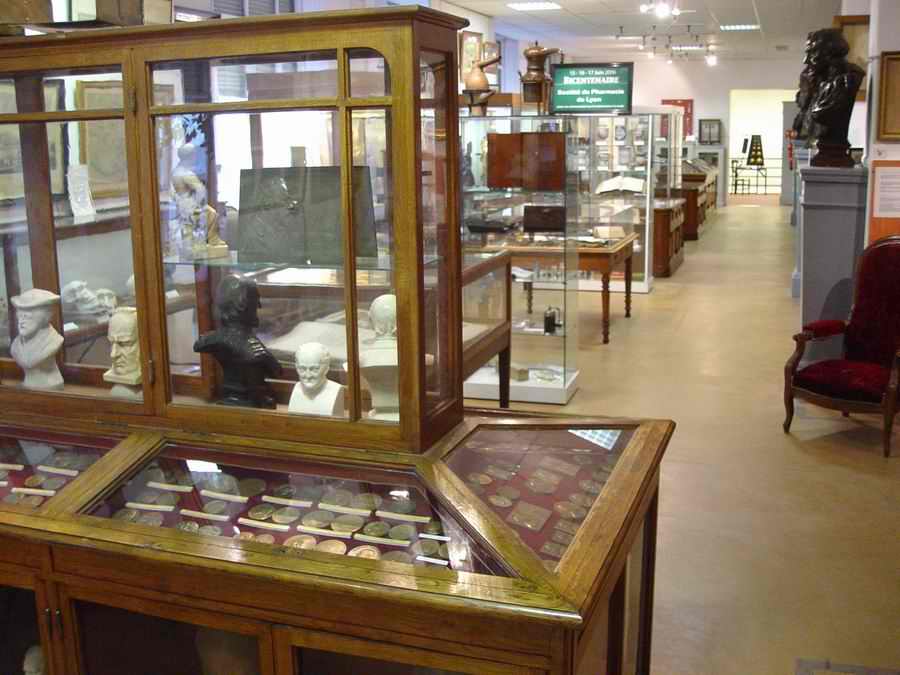Museum of the History of Medicine and Pharmacy
Towards the end of the 19th Century, Alexandre Lacassagne came up with the idea of a Museum of the History of Medicine and Pharmacy, and then, around 1896, he managed to turn this idea into reality. The museum was originally within the newly-built faculty on the Quai Claude Bernard.
In 1930, at the same time as the opening of the Edouard Herriot Hospital, it was possible, thanks to the generosity of an American donor, to set up the faculty of Medicine and Pharmacy on the Rockefeller estate, and the museum was transferred to its current site. This museum was the first of its kind. It follows the philosophy inherent in the Hippocratic oath, namely that all doctors have the duty to pass on to those who come after them what they learned from those who came before them...
In accordance with the Ordinance of July 13, 1945, a museum is a "permanent collection, open to the public, of works of artistic, historic or archaeological interest."
We should also remember that:
- In Lyon, as in most cities in Europe, the Renaissance gave rise to "wonder rooms" and "cabinets of curiosities". They displayed medical objects, and in particular those connected with anatomy. Collections of this kind, usually private, were also set up in hospitals, in particular in Lyon, where the lack of a faculty of medicine made their role as a place of teaching all the more important.
- In 1795, Marc Antoine Petit, a surgeon at the Hôtel Dieu, set up with Cartier a medical and surgical teaching facility sometimes called the "Hospital School", within which, its anatomical collection and libraries played an important role.
- In 1816, the general council of the board of the civilian hospitals authority of Lyon draw up "Regulations for practicing medicine and surgery at the Grand Hôtel Dieu hospital" and referred explicitly to the "practice" for teaching students.
Alexandre Lacassagne (1843-1924), a student at the Military Medical School, took over from Gromier as the chair of Forensic Medicine of the University of Lyon. He was in charge of overseeing matters related to his teaching in both museums.
He nonetheless decided in 1896 to found a third institution, the Museum of the History of Medicine and Pharmacy, which was to be based upon the organization of modern society, with the aim of passing on medical and pharmaceutical knowledge, as well as training students and dispensing therapies.
The Museum of the History of Medicine and Pharmacy was, in this sense, "the first of its kind". Its rules were defined by a Decree signed on April 16, 1914, by Mr. Raymond Poincaré, the President of France.
The museum contains all kind of objects, which explain and show visitors how the principles of medicine evolved over the centuries, and demonstrate the resources available to doctors to do their job.
Responsables : Pr RUDIGOZ, Pr BENZONI.
Localisation : Domaine Rockefeller, Aile A-C, 1er étage.
Horaires d’ouverture : lundi, mardi, mercredi, vendredi 14h-17h.
Courriel : musee.medpharm@univ-lyon1.fr
Téléphone : 04-78-77-70-48



 en
en es
es

